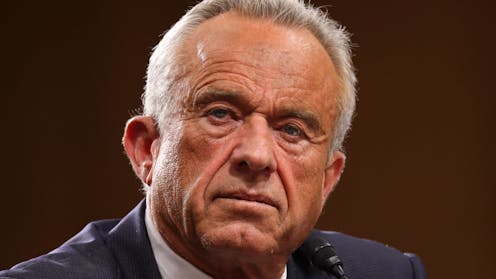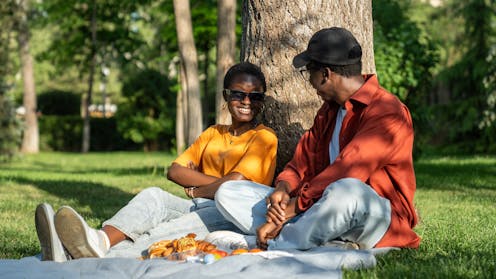Source: The Conversation – UK – By Yaron Peleg, Kennedy-Leigh Professor of Modern Hebrew Studies, University of Cambridge
When the Zionist movement began to gather pace a century ago, many Jewish supporters wanted not just to create a political state for themselves, but to initiate a cultural revolution that would forge a new kind of Jewishness. Proud, self-reliant and resilient, the “new Jew” was a reaction to centuries of bullying, culminating in the virulent antisemitism of the modern era.
But, as I argue in my book, New Hebrews: Making National Culture in Zion, as Zionists set out to invent themselves anew, they also sowed the seeds of self sabotage. Early pride and defiance, paired with disregard for the native Arabs of Palestine, bred both a survival instinct and a dangerous militarism.
A look back at some of the principles of the Zionist revolution in the 20th century uncovers the cultural backstory to Israel’s current situation. It shows how the same vision that built a strong nation also hardwired the divisions and antagonisms now threatening its democracy, security and place in the world.
In this way, I argue the logic behind Israel’s alarming actions in Gaza, the rage with which it continues to come down on the Gazans following the October 7 attack almost three years ago, may be found in the country’s history.
The cultural revolution Zionists staged was an intensive project. It was a revolution so fervent that it altered the course of Jewish history and set in motion one of the most enduring transformations in a century crowded with radical changes.
Many of the Zionist innovations were truly impressive. The ancient Hebrew of the Bible was used to create a completely modern literature and was later turned into a spoken language. The socialist leanings of early Zionists led them to experiment with new communal forms, such as the kibbutz. The old Jewish festival calendar was creatively updated in the spirit of modern nationalism.
Zionists also created new artistic sensibilities in visual art and in music. They tapped into rich and diverse Jewish cultural traditions that spanned geographic regions.
The ‘new Jewish body’
One innovation in particular, the physical transformation of the Jewish image, had profound consequences that continue to reverberate today as we see in the tragic war on Gaza. At the heart of the Zionist cultural revolution lay a determination to overturn centuries-old stereotypes of Jews as outcasts: weak, passive, cowardly. Drawing on European nationalist ideals Zionists wanted to disprove these slanders by forging new Jewish men (men in particular): strong, productive, and self-reliant.

Israel Preker via the PikiWiki via Wikimedia Commons
This remaking of the Jewish body was not merely symbolic. It was a deliberate strategy to reclaim visibility, dignity and respect. It was a quest that would have far-reaching consequences for Jews and non-Jews alike.
The obsession with manual labour was both a necessity and an ideological cornerstone of Zionist ideology. It was the engine behind the remarkable growth of the Yishuv – (literally: settlement) – the Jewish community that developed in Palestine in the first half of the 20th century.
Commonly referred to in quasi-military terms as the “conquest of labour,” it romanticised agriculture and construction work as a moral and spiritual renewal. It was a rebuttal to the negative stereotype of Jews.
But I believe it had a more problematic side. As Arab resistance to Zionist settlement grew, the new Jewish farmers evolved a military side as well.
The inspiration for it came from two sources, from the fighting culture of local Bedouins, and from the Ukrainian Cossacks. This was an ironic twist given the violence Cossacks often directed at Jews. By 1948, both farmers and soldiers became two of Zionism’s most distinct symbols, national ideals of productivity and physical force.

Kluger Zoltan/GPO, CC BY-SA
But something unexpected happened to that evolution somewhere along the way. In their effort to create a new kind of Jew, Zionists in Israel distanced themselves from life in the Jewish diaspora – sometimes by internalising antisemitic notions of that life.
One sad example was the chilly reception Holocaust survivors received in 1950s Israel. Some Jews born in what is now Israel, who were referred to as sabras (prickly pears), were arrogant enough to believe they would have fared better under the same circumstances than those caught up by the Holocaust, who they called sabonim (soap).
Return of victimhood
By the 1980s, attempts to leave behind the so-called “lachrymose history” of Jews – which viewed Jewish history primarily as a narrative of suffering and persecution – began to be supplanted. During and after the trial of Nazi war criminal Adolph Eichmann in 1961, Nazi persecution of Jews was linked first by Israeli prime minister Ben-Gurion and then journalists and academics with Arab resistance to the state of Israel.
Both were eventually presented as examples of congenital hatred and used as a powerful argument for the establishment of the state and its right to exist. It was a dramatic combination, hard to resist, that connected the creation of the Jewish state with the near destruction of the Jews in the Holocaust – even if Zionism emerged long before that catastrophe.
The baggage that was put aside in the rush to statehood, was now being opened. A reminder for Zionists that utopias are more easily written about than created – and that the pull of Jewish history is stronger than they thought.
The resulting new mix was alarming: a combination of the Jewish power Zionism obtained with the old sense of Jewish victimhood that early Zionists had fought hard to eradicate.
Consider this: in the aftermath of the October 7 2023, attack many people in Israel referred to it as a pogrom, a word that describes the sporadic massacres of Jews in eastern Europe. Think about it. Israel, a rich and powerful country, well-connected and – until recently at least, generally well-liked – compared itself to a small, vulnerable and isolated Jewish shtetl (small settlement in eastern Europe) in a bygone world where Jews were utterly powerless.
That one word, pogrom, explains it all. It wipes away 100 years of Zionist history and resurrects old Jewish grievances.
This may be one explanation for the country’s overreaction in Gaza. This is not an excuse, but an explanation that calls for the next evolutionary step in the history of Zionism – one in which Israel understands that it has achieved the goal for which it was established. Israel must realise it has power – that it is a power – and that with power comes responsibility.
This article contains references to books that have been included for editorial reasons, and this may include links to bookshop.org. If you click on one of the links and go on to buy something from bookshop.org The Conversation UK may earn a commission.
![]()
Yaron Peleg does not work for, consult, own shares in or receive funding from any company or organisation that would benefit from this article, and has disclosed no relevant affiliations beyond their academic appointment.
– ref. How Israel’s self-image changed from self-reliance to aggressive militarism – https://theconversation.com/how-israels-self-image-changed-from-self-reliance-to-aggressive-militarism-262657









